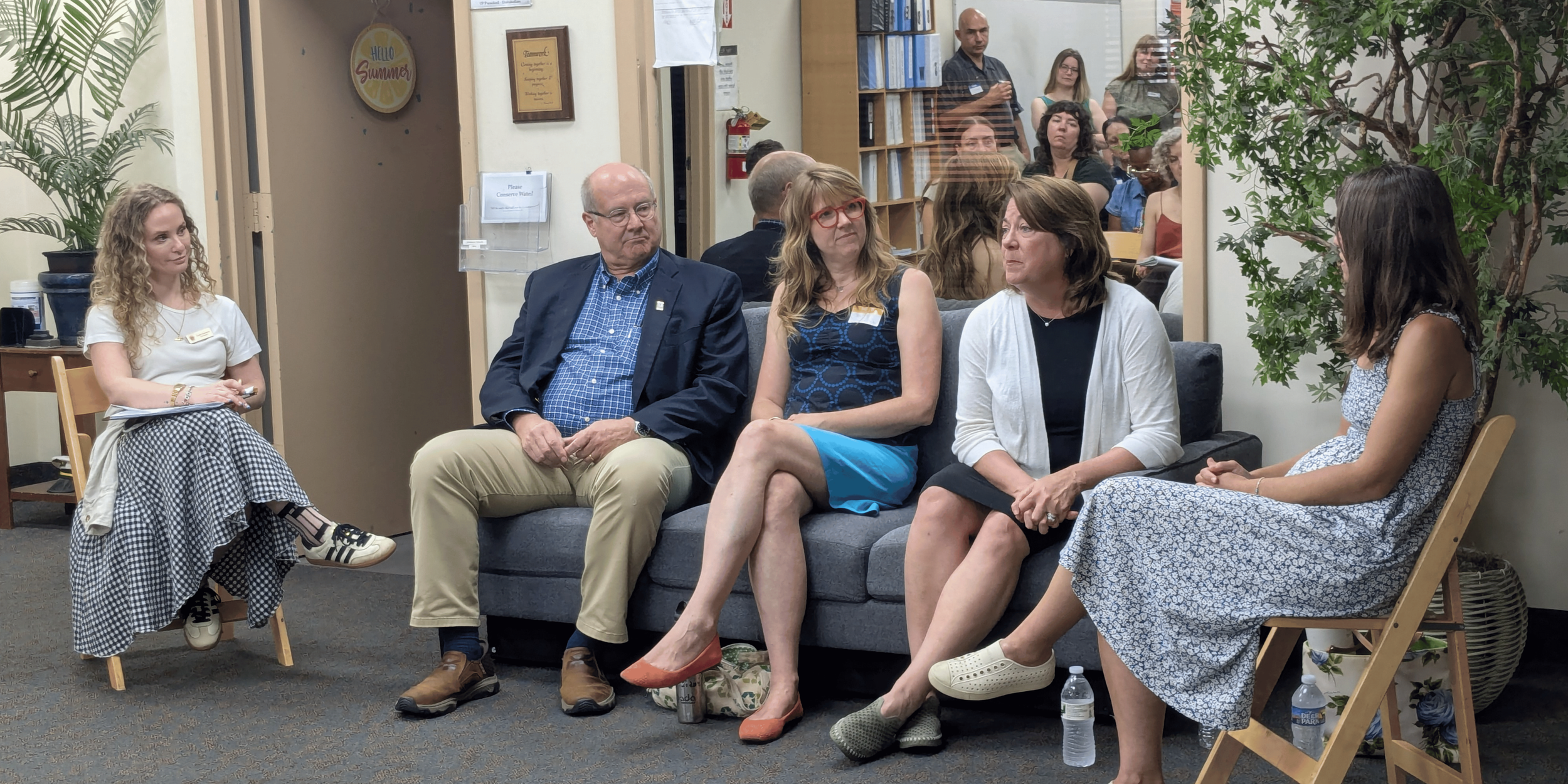Where Do Our Donations Go? A Behind-the-Scenes Look at Goodwill
By Arielle DeVito
As we walked through the Goodwill warehouse, the only thing I could think was “What an incredible amount of labor. And what a terrifying amount of STUFF!”
On July 10, 2025, I was lucky enough to join Pennsylvania Fibershed and Circular Philadelphia in July on a tour of Goodwill Southern NJ and Philadelphia’s sorting and processing facility. And while I thought I knew what I was getting into, I was astonished at how much there was going on behind the scenes that you’d never know about as a regular customer. Here’s just a sliver of what we learned:
23 million pounds of donations flow through Goodwill Delaware, every single year
40% of those donations are unsellable due to their condition upon arrival
Goodwill collects 60,000 lbs of plastic bags annually just from donation drop-offs, and has them upcycled into building materials
Each month, Goodwill NJ ships over one million pounds of clothes to salvage markets overseas
During the guided tour of their warehouse, we saw firsthand how Goodwill is working hard to keep as much as possible out of the landfill. Every donation in good enough condition is sent to the retail storefronts first, but on average, only 35% of those items actually sell. After about a month, unsold items are sent to the warehouse, where they’re sorted and either placed in the outlet store or directed to the salvage department.
I had no idea how much of what Goodwill receives ends up on the global salvage market. Nearly one-third of donated clothing is torn, stained, or missing parts, making it unsellable in stores. These items are compressed into massive 1,100–1,200 lb bales and packed into shipping containers—each holding around 44,500 lbs of textile waste.
They’re then sent to countries like Pakistan, where the materials may be resold or repurposed into rags, insulation, or blankets.
What was most remarkable was seeing just how many people were working there, sorting and processing an enormous volume of donations, all with the goal of giving each item a new life and purpose. A core part of Goodwill’s mission is helping people enter or re-enter the workforce. They offer a range of incentives and provide both on-the-job and off-the-job training, with a strong focus on employee development. Everyone we spoke to was really happy to be doing the important work to reduce waste, which is evident in their retention rates. Almost all of the employees we spoke to had been employed by Goodwill for 10 years or more.
After the tour, we heard from Mark Boyd, President and CEO of Goodwill Southern NJ and Philadelphia, and Colleen Marrone, President and CEO of Goodwill Delaware and chairman of sustainability for Goodwill International, on a panel with Sam Wittchen, Co-Founder of Circular Philadelphia, and Rachel Higgins and Leslie Davidson, co-founders of Pennsylvania Fibershed.
On the panel, Mark and Colleen highlighted some critical roadblocks that Goodwill faces in their mission to reuse everything possible, specifically noting the increasing amount of fast fashion in the donations they receive. Fast fashion production has doubled in the last 15 years, and it’s estimated that more than half of it is disposed of less than a year after it was created. Moreover, the clothing falls apart easily and is made of such low quality synthetic fabric that even salvage markets reject it. Learning that fast fashion isn’t even suitable for downcycling into rags was one of the most eye-opening moments of the panel.
When the floor opened up for questions, we were all burning to know one thing: what can the average person do? Mark and Colleen emphasized that Goodwill’s work can only go so far, since they only receive a tiny percent of the total volume of reusable waste that America generates. As everyday consumers, it’s our responsibility to think about the end life of our items, and to donate clean, undamaged items whenever we can. For people who aren’t able to transport items themselves, Southern NJ and Philadelphia Goodwill even has a new partnership with Uber which will pick up donations right from your door for free.
The panelists discussed what it might look like to imagine a circular textile economy in Pennsylvania from the ground up, and the role that reuse via thrift stores like Goodwill would play in that. Sam Wittchen at Circular Philadelphia emphasized that the system wasn’t always so wasteful: "Philadelphia used to be the workshop of the world. We can build the workforce for a circular textile economy—we just need the funding and the policy to underpin this infrastructure."
Rachel Higgins from PA Fibershed, who teaches at Drexel University in the Design & Merchandising Program, stressed how important sustainability education is for designers. "There's a lack of connection between fashion designers and fiber producers,” she shared. “Many designers just don't understand the system they're participating in at all.”
I think that everybody was stunned by the sheer volume of items that we had just seen moving through the warehouse. One of the attendees summed this up really well when he said: "A whole island of clothing is leaving here every week. It's a kind of insanity, if you really think about it. As humans, we have to do a better job than that."
And ultimately, that was my biggest takeaway from this tour. The amount of money, labor, and time that it takes to sort donations and find a way to reuse as much as possible is astronomical. Goodwill does the best they can, and it’s incredible how much they’re able to save from the landfill. But when our systems pump out items without longevity or reusability, thrift stores can only do so much to fix the problem.
So at every turn, we have to be asking ourselves: how can we buy less, reuse more, and prioritize circularity in every step of the life of our belongings?
Huge thanks to everyone at Goodwill Southern NJ and to Circular Philadelphia for such an insightful tour and conversation. I know I’ll be thinking about it every time I buy a new item!




